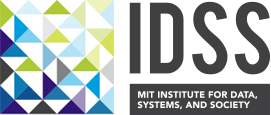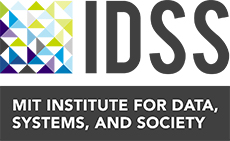
Teaching intuition about uncertainty
Whether the subject is the spread of Covid-19 or an upcoming election, important news is often informed by statistics. In both of these examples, widespread confusion and conflict arise as people across American society try to make sense of ‘predictions’ offered about uncertain situations. Misinformation further muddies the issue — and some misinformation is successful because it takes advantage of this confusion around uncertainty.
The challenge even extends to the scientific community, where erroneous use of statistics leads to faulty methodology and misleading findings that can’t be reproduced.
To Emery Brown, Edward Hood Taplin Professor of Medical Engineering and Computational Neuroscience and a core faculty member of IDSS, this is evidence of a systemic problem: people really don’t understand how statistics work.
“The American education system emphasizes the teaching of deterministic mathematics — algebra, geometry, trigonometry, calculus,” says Brown. “The teaching of the mathematics of uncertainty — probability and statistics — receives far less attention.”
To meet this need, Brown is leading a team to create a probability and statistics curriculum that can be integrated into primary education. Beginning in 4th grade and going through the senior year of high school, students will learn probability and statistics concepts appropriate for their grade level. New concepts will build on previously taught ideas through repetitive problem solving so that students can develop intuition about the mathematics of uncertainty.
Introducing statistics
The goal of the curriculum is for students to master by their high school senior year the concepts that MIT sophomores and juniors are learning currently in 9.07, Introduction to Statistics for Brain and Cognitive Sciences.
Brown and his former Ph.D. student, Tuan LeMau, are using this residential MIT course for materials and problem sets. Over 400 finished problems from the 9.07 course have been organized into a database so far. They have also created interactive visualizations and model problems that include Covid-19 testing, election polling and sports performance.
“Model statistics problems allow us to demonstrate several concepts in a single, highly relevant, and context-based way,” says Brown. “The goal is for students to develop the same intuition about uncertainty that they achieve for deterministic mathematics and physics through progressive teaching and regular reinforcement/repetition of key concepts.”
Blackwell-Johnson-Banneker
The project is a joint effort of IDSS and the Laboratory for Information and Decision Systems (LIDS), with Brown as program director and IDSS director Munther Dahleh serving in an advisory capacity. Brown has named it The Blackwell-Johnson-Banneker Statistics Education Project, after three accomplished African-American mathematicians. They are David Blackwell, a major contributor to modern game theory and the first African-American elected to the National Academy of Sciences; Katherine Johnson, a NASA scientist who worked out the flight trajectories for the Mercury space missions; and Benjamin Banneker, an early data scientist who published accurate astronomy almanacs and laid out the plans for Washington, D.C.
“My father, a junior high and high school mathematics teacher, used to always tell me about Benjamin Banneker,” says Brown. “What all three people accomplished is inspiring, so I named the project after them.”
Next steps for Brown and LeMau after completing the curriculum include developing a program to teach primary school teachers how to teach probability and statistics, and then hopefully conducting pilot programs with primary school students.
“We’re very excited about this project at IDSS,” says Dahleh. “It comes from the heart of the IDSS mission to advance education in statistics and data science.”
The project has been critically supported by the Burroughs-Wellcome Foundation, the Office of the Vice President for Research, and the D’Arbeloff Fund.



